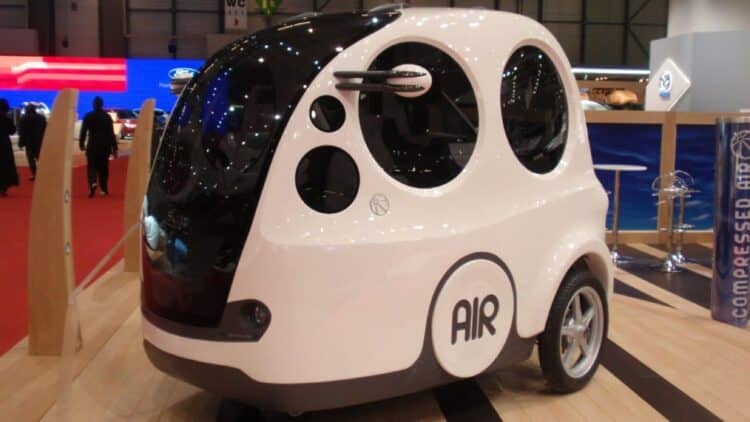A somewhat different and little-known alternative in the field of mobility, especially regarding sustainable mobility and zero emissions, is gaining ground in the market. We are not talking about hydrogen or electric cars, but rather a source of fuel that is all around us all the time: air. Discover more about this unusual air-powered vehicle.
Luxembourg’s MDI reinvents mobility with a compressed air-powered car
The idea came from a European company, directly from Luxembourg, MDI (Motor Development International), whose project was coherently named AIRPod 2.0. The proposal involves redesigning a car that is capable of operating, powered by energy generated by compressed air, simply put.
The car’s engine, instead of relying on the combustion of fuels like gasoline or ethanol to generate the energy needed to move the pistons, or even on a heavy lithium battery pack to power the electric motor and drive the car, AIRPod 2.0 comes with an even simpler proposal: to store air under high pressure, which when released moves the mechanics of the engine specifically designed for this purpose, resulting in the movement of the car.
It is a bold and somewhat creative proposal, which aims to be a viable, lightweight, and primarily less polluting alternative. In a world where the energy transition has been increasingly discussed — and also increasingly necessary — solutions like this hold great value for various applications. But after all, what is this vehicle like?
AIRPod 2.0 combines comfort, practicality, and clean urban mobility solutions
The AIRPod 2.0 was developed to make the experience for drivers as comfortable and interesting as possible. For a complete and appropriate ergonomic experience, the design was based on three main criteria: a sense of safety, well-being, and practicality. The interior was designed 100% to provide a smooth and interesting journey for a maximum of two people in the car.
Moreover, the investment in connectivity and information for the driver was also a focus of the project, which aimed to be as practical and intuitive as possible. The driver has access to information about the entire vehicle from two control zones: the first provides more technical information, such as the compressed air level, that is, the ‘fuel’ level of the car, vehicle speed, and engine RPM. In the second zone, there are some controls, such as the air conditioning and sound systems.
Finally, the project is surprisingly spacious and compact at the same time. The car’s trunk has dimensions similar to those of popular cars, allowing for the transport of luggage and other accessories. Another point is that the front door is wide and allows easy access to the vehicle. All these factors are appealing and provide a good and complete driving experience.
A viable, sustainable alternative with potential for large-scale use
Zero Pollution Motors holds the rights to the production and commercialization of this concept created by MDI in the USA, where the AIRPod 2.0 became considerably well-known on a large scale in 2015 after participating in the reality show SHARK TANK, even managing to secure an investment proposal to be applied in the production and sales in the country.
We know that currently the use of CO2-emitting fuels is still widely used on a global scale, but increasingly new alternatives for mobility have emerged, with a strong emphasis on electric and hydrogen cars. The AIRPod 2.0, powered by compressed air, comes as a creative, efficient, and viable alternative within a sustainable concept, not only for urban applications but also for various sectors in the industry. It is clear that this concept has great potential for application and viability; now we must accompany its growth, and who knows, soon, we might be driving a vehicle whose fuel is simply air.

